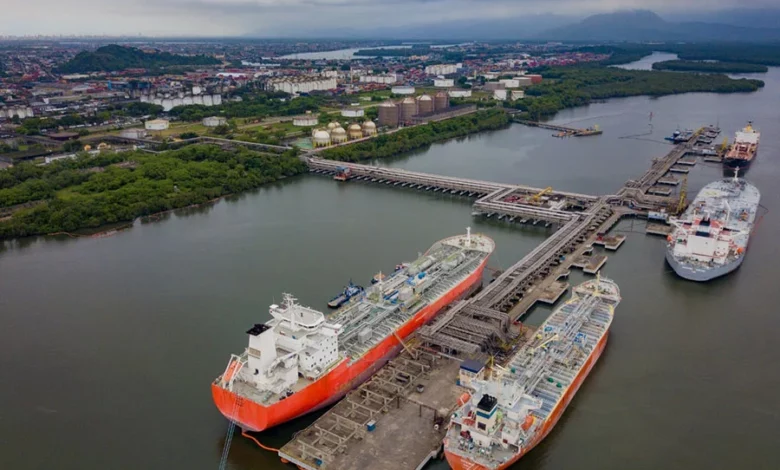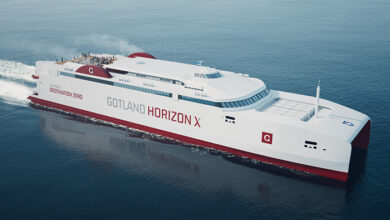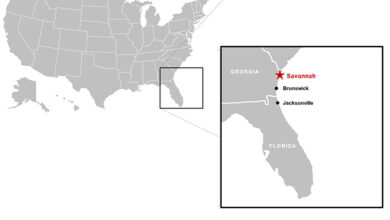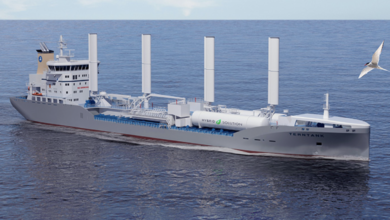Port of Santos: The Latin American giant to host the AAPA Latino 2022

PA’s earnings for the period reached $26.5 million, an impressive 91% growth
Except for Colon, in Panama, which each year disputes the throne of the largest Latin American port in terms of container transfer, there is no other port in the region that can be compared to the Porto de Santos. Taking into consideration the total movement of goods (adding bulk and breakbulk cargo), the numbers of the Brazilian giant are simply impressive: in 2021 it reached its absolute record with 147 million tons.
With an area of 7.8 million square meters, 53 terminals involved in its operations and 60 berths, Brazil’s largest logistics hub managed by the Santos Port Authority (SPA) will be the main stage of the XXX Latin American Congress of Ports of the American Association of Port Authorities (AAPA) in its 2022 edition.
As well as hundreds of ships (almost 5 thousand in 2021) moor its docks annually, hundreds of visitors will also “land” in the city of Santos, São Paulo State, between November 28 and 30, when the main Latin American port event will take place.
Representatives of port authorities, directors, managers, executives, suppliers, and consultants of ports, terminals, logistics companies, shipping companies, and other players of the industry will gather in Santos for what promises to be an unforgettable meeting.
THE PORT OF SANTOS NOWADAYS
In its 30-year history, Santos has positioned itself as the largest port in Latin America. Its terminals connect with routes that lead to more than 600 ports in 125 countries around the world. From Europe to Asia, passing through other South American, African, and ocean terminals, the port of Santos is connected on a global scale.
Every year, Porto de Santos processes millions of tons of different kinds of cargo. From breakbulk, containerized, general and special cargo, project cargo, roll-on roll-off, dry bulk, liquid bulk, industrial, construction, food, and technology, among others. All varieties of cargo are handled by the Brazilian giant.
The 147 million tons of cargo moved by its terminals last year included sugar, coffee beans, and orange juice, making it the world’s largest exporter of these products. Additionally, its trade included fuels, soybeans, fertilizers, bran, cellulose, spare parts, bulk liquids, and automobiles.
Tourism also represents a relevant business segment for the port. Currently, international cruise ship arrivals are in full recovery of their pre-pandemic flows, which in seasons such as 2011 reached peak figures of 1.1 million passengers.
Last but not least, Santos is also an integral hub oriented to attend the most diverse services involved in the logistics and foreign trade chain, from logistics services, cargo storage, intermodal, shipyard and ship repair, bunkering, tugboats, and others.

INFLECTION PHASE
Visitors arriving at the main South American point of maritime connections next November will find a port hub that seeks to surpass its own transfer records and that is also passing through an inflection phase. In 2019, a privatization process was initiated, which is still ongoing.
In fact, the privatization of Santos was the main purpose of the roadshow held by a Brazilian delegation last May in New York. The official mission was led by Brazil’s Minister of Infrastructure, Marcelo Sampaio, who was accompanied by representatives of the Partnerships and Investment Program (PPI) and the Brazilian Development Bank.
The port continues to seek potential investors for this leap towards its modernization, therefore groups such as the American EIG Global Energy Partners and DP World -a multinational logistics giant based in the United Arab Emirates– have met with the Brazilian authorities to analyze the projections for this process. Investments of up to USD 3.1 billion are estimated, which could turn Santos into one of the largest port hubs in the entire Southern Hemisphere.
Moreover, the port seeks to equal and improve its transfer peaks achieved in 2021, a goal that is on its way to be fulfilled. During the first quarter of this year, its cargo throughput reached 38.7 million tons, of which 27.7 million represented exports and 10.9 million imports. These numbers represented a 9.6% growth over the same period of the previous year and the highest flow in a similar period in recent years.
Furthermore, during the same period, Santos concentrated almost a third of his country’s foreign trade (29.7%), the highest percentage since the first quarter of 2016.
Likewise, SPA’s earnings for the period reached $26.5 million, an impressive 91% growth, making it the best quarterly financial result in its history.














